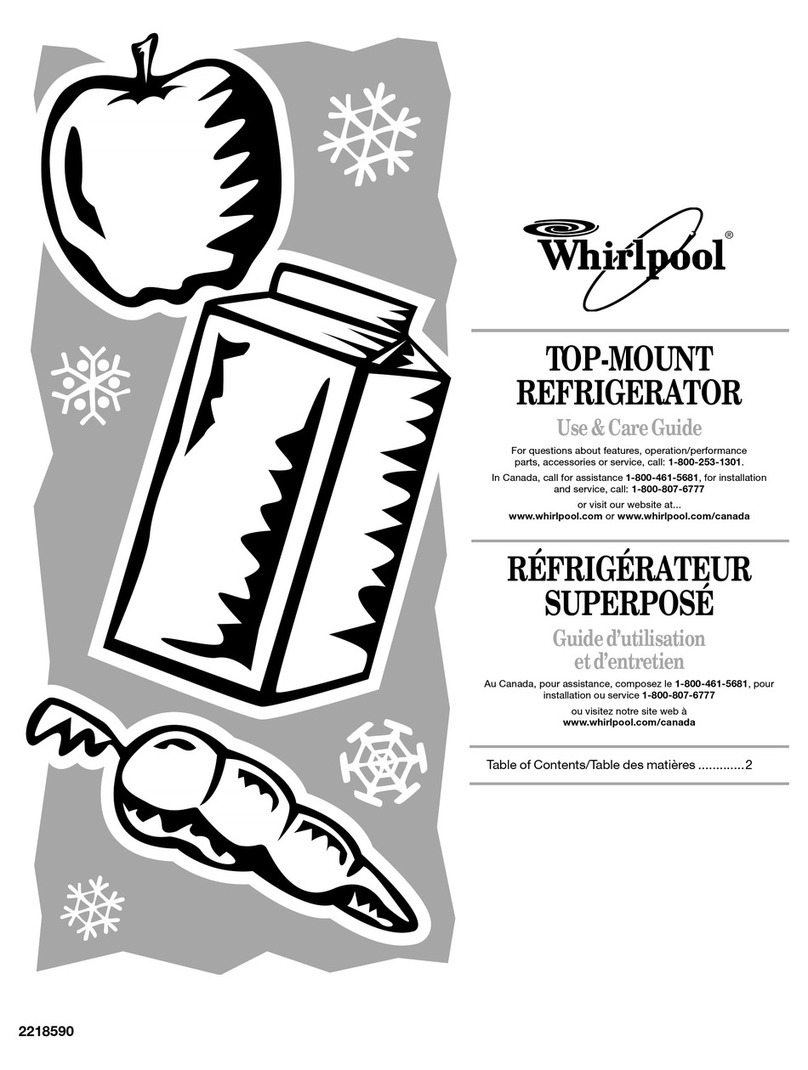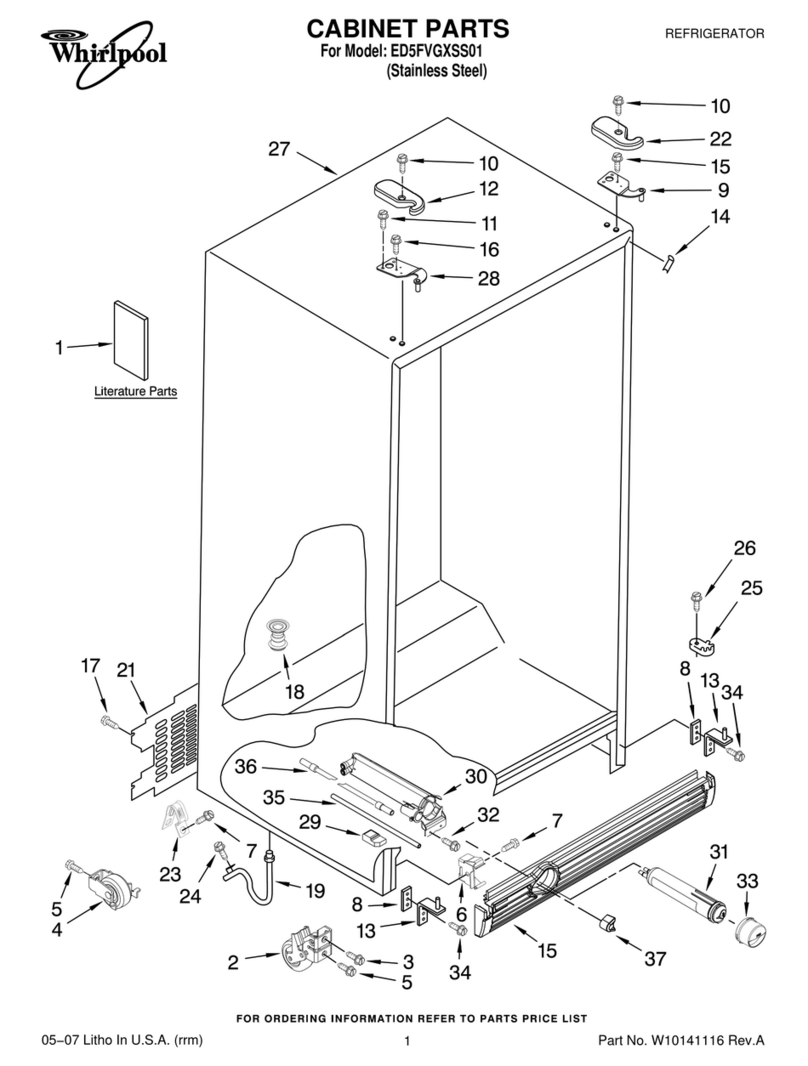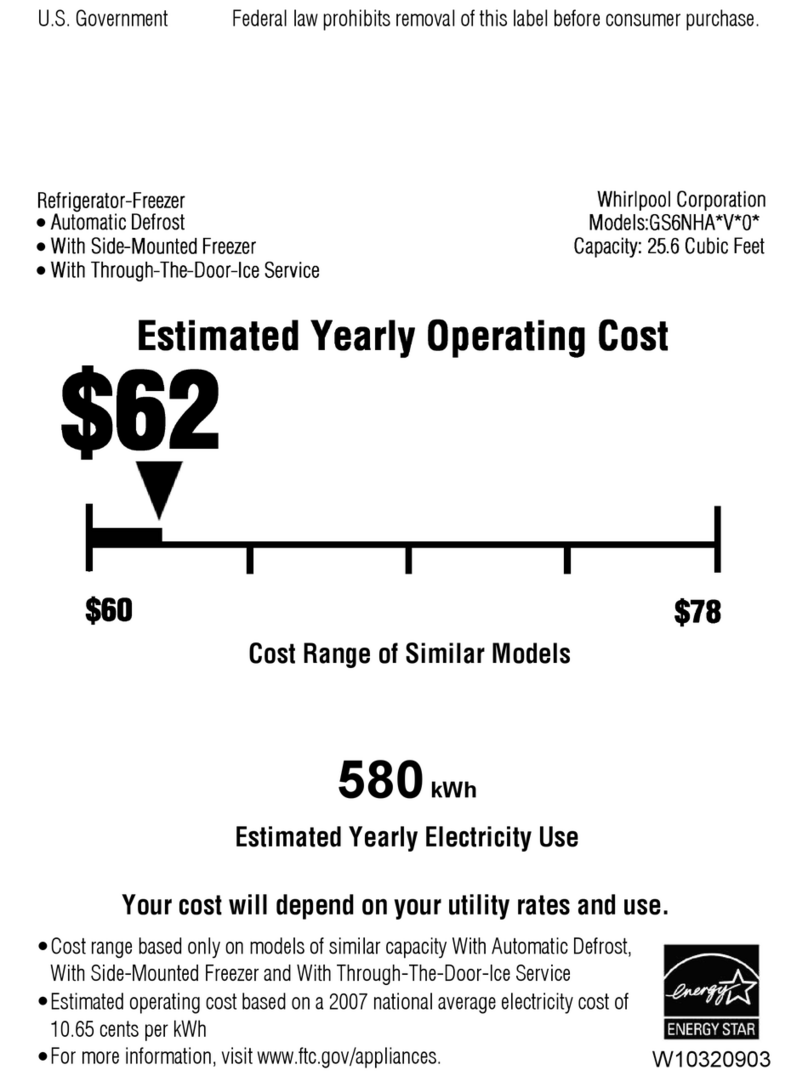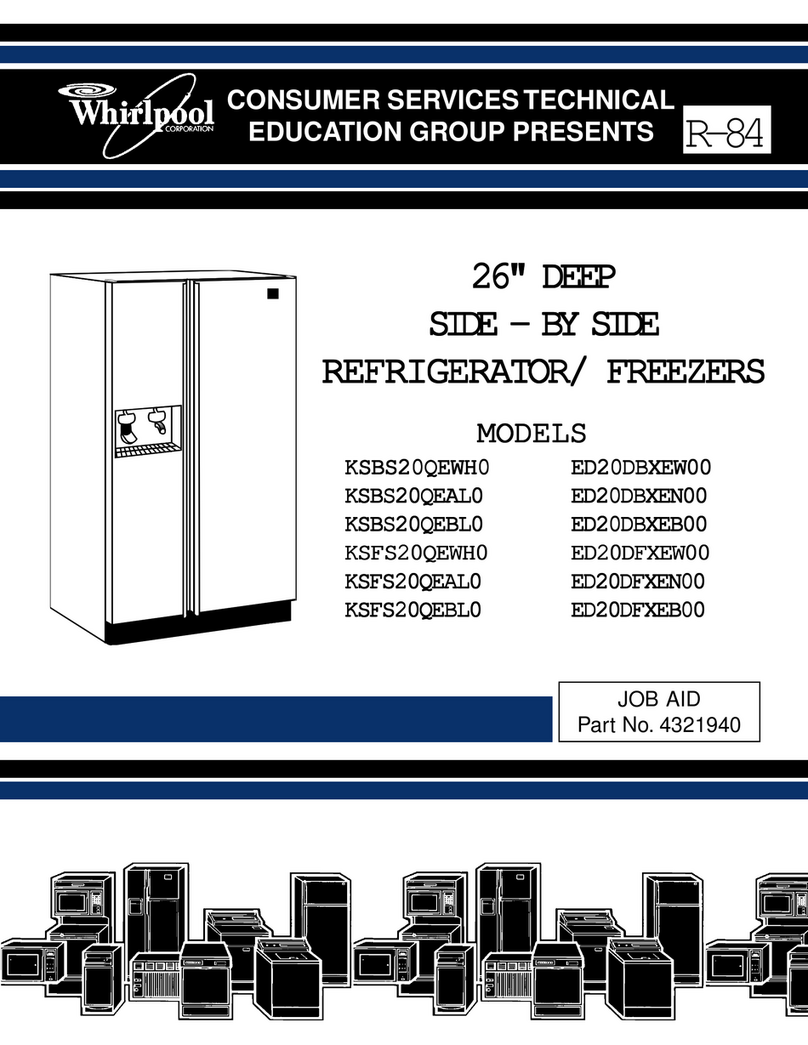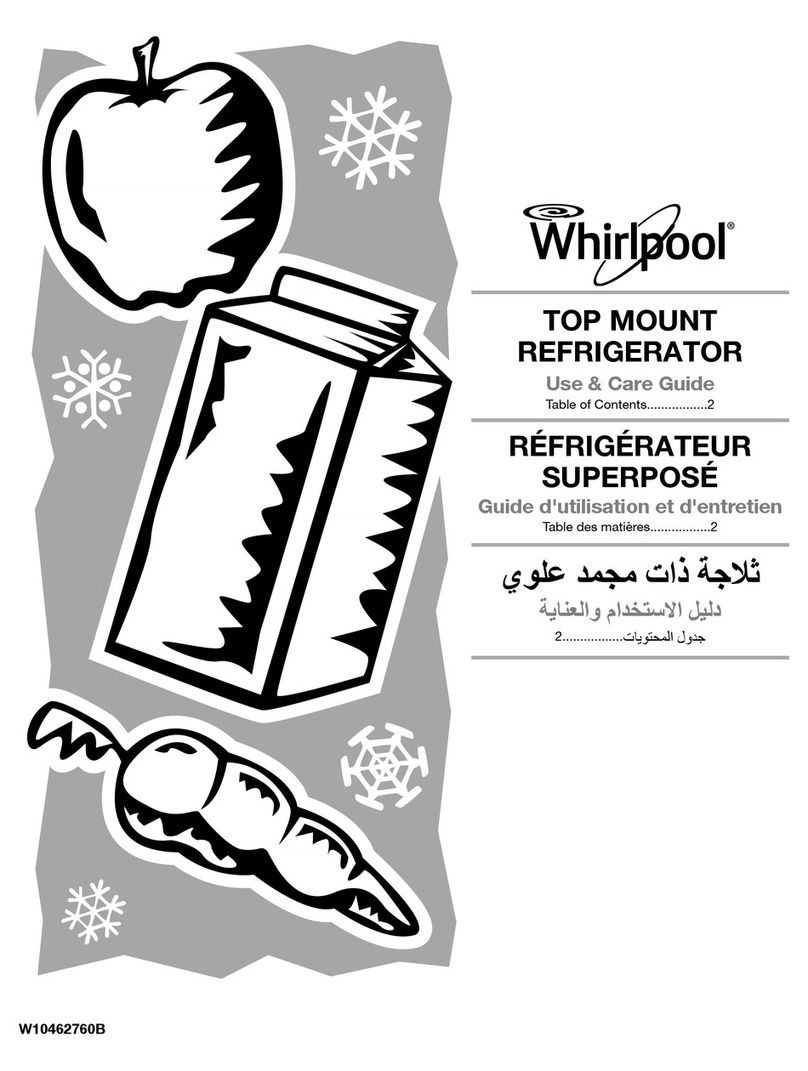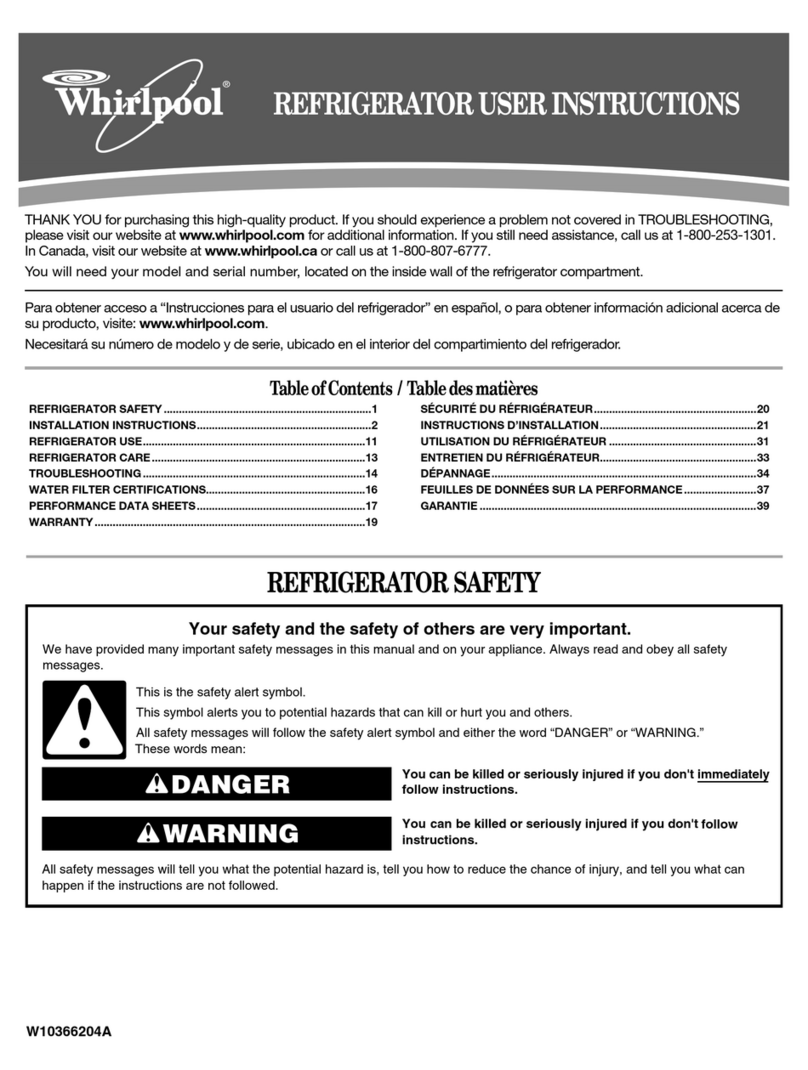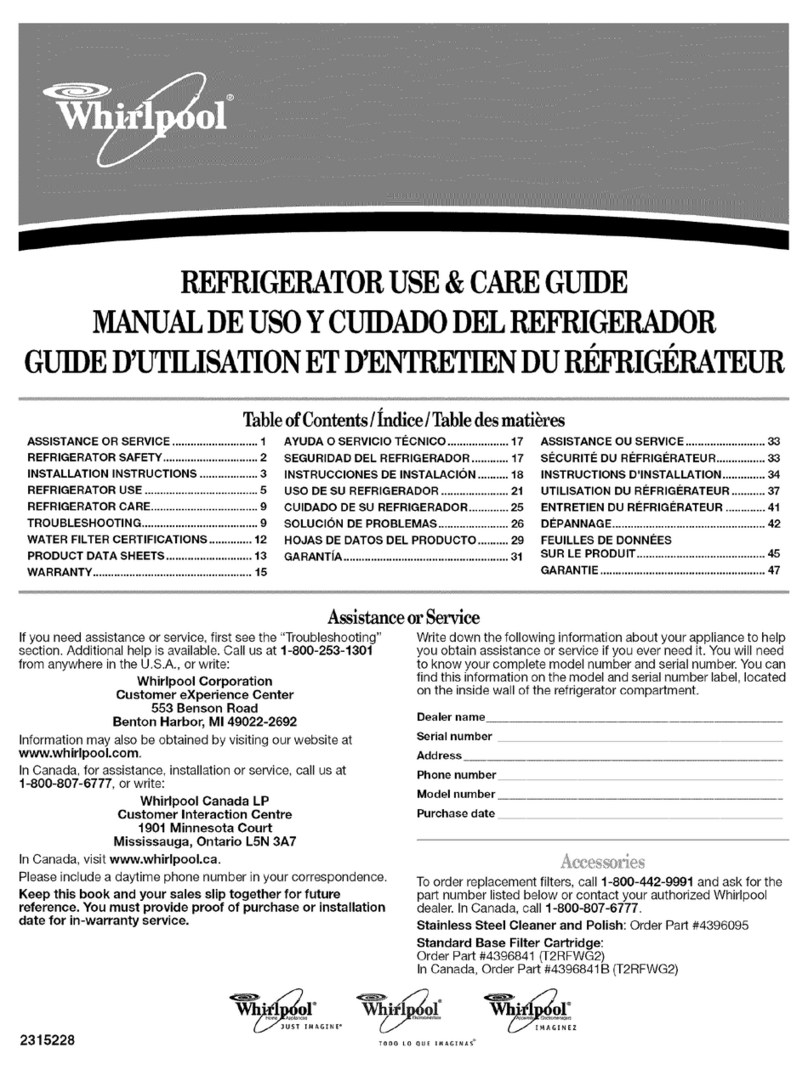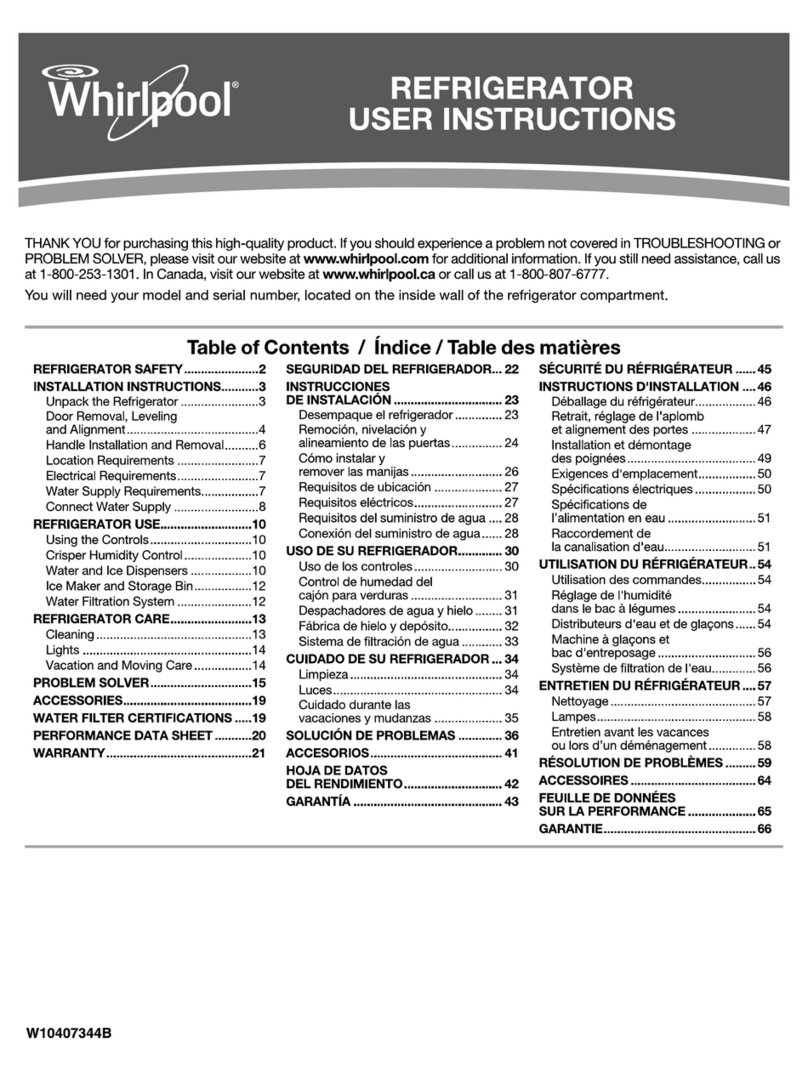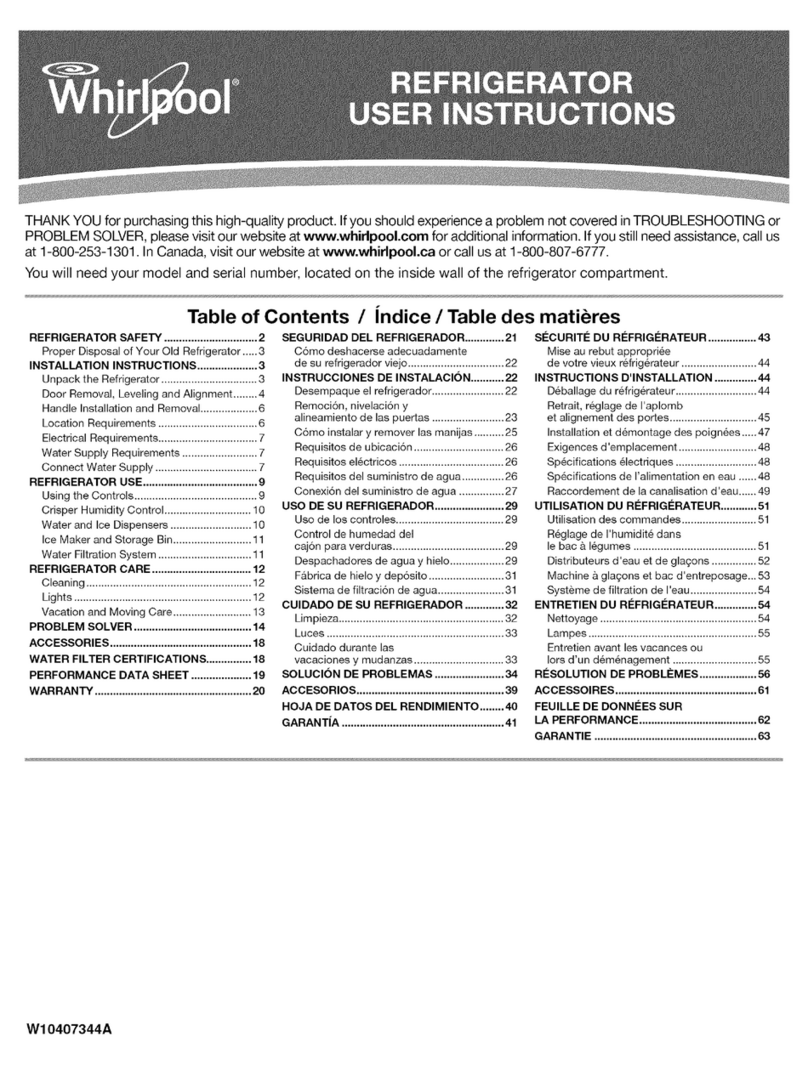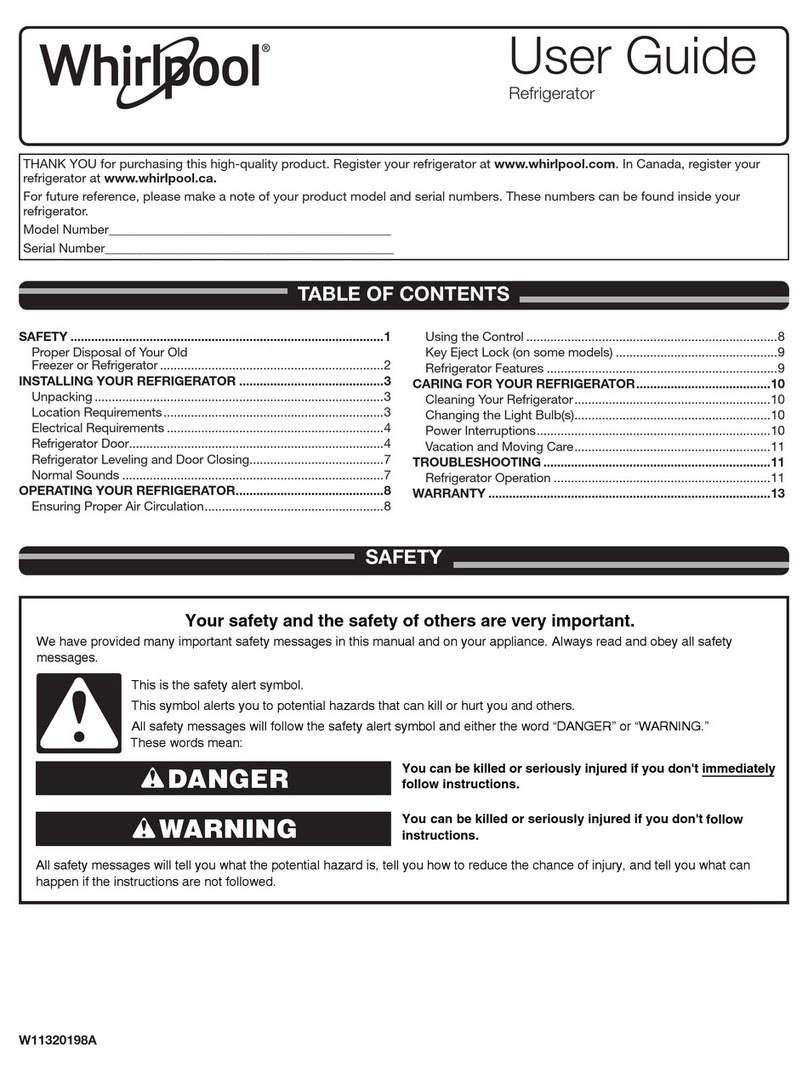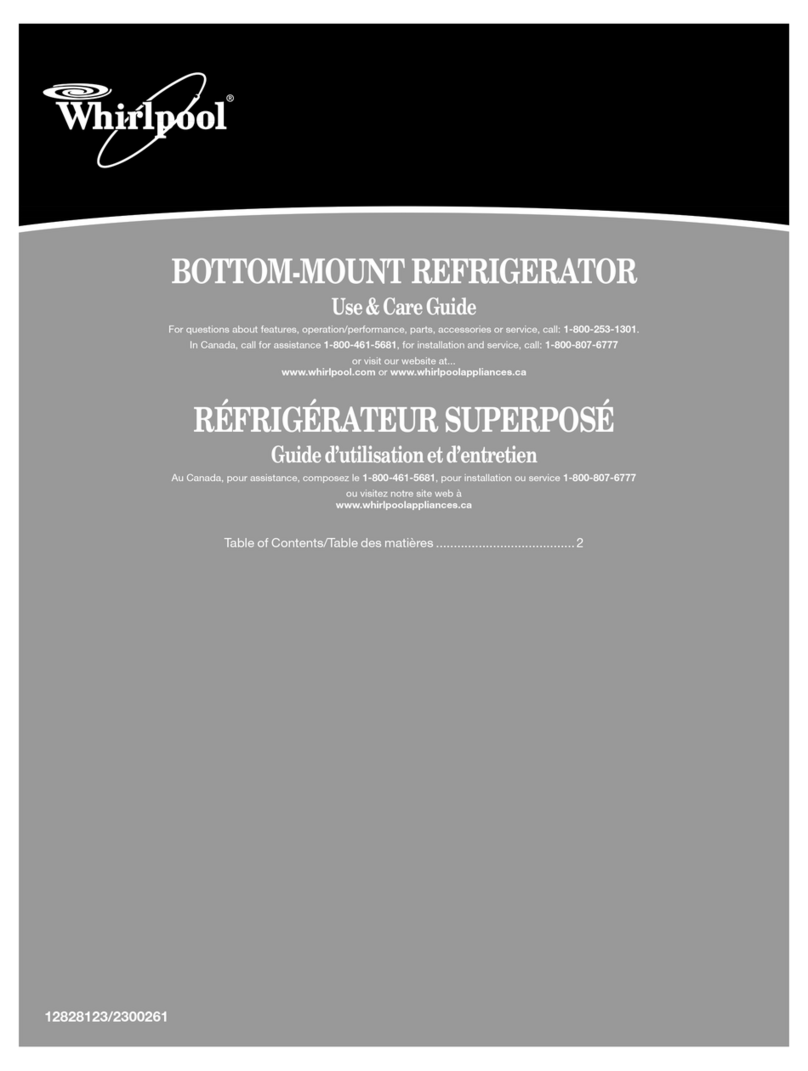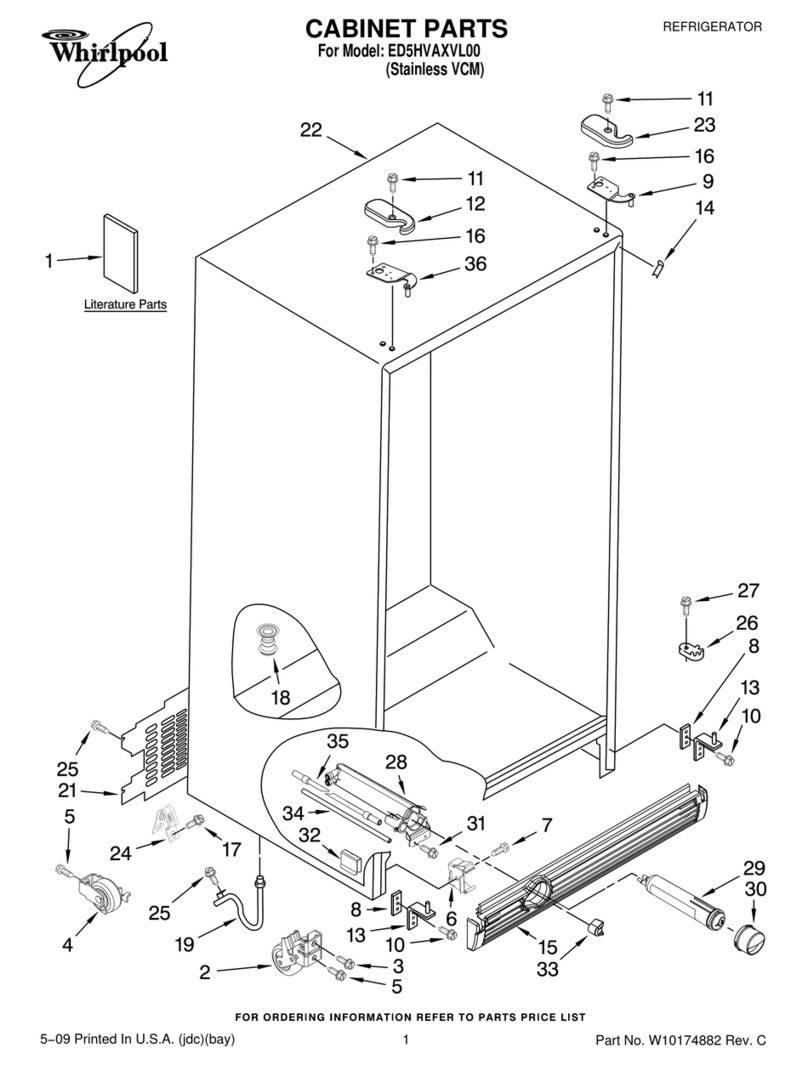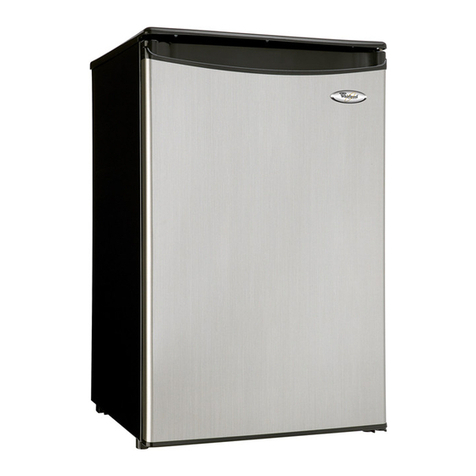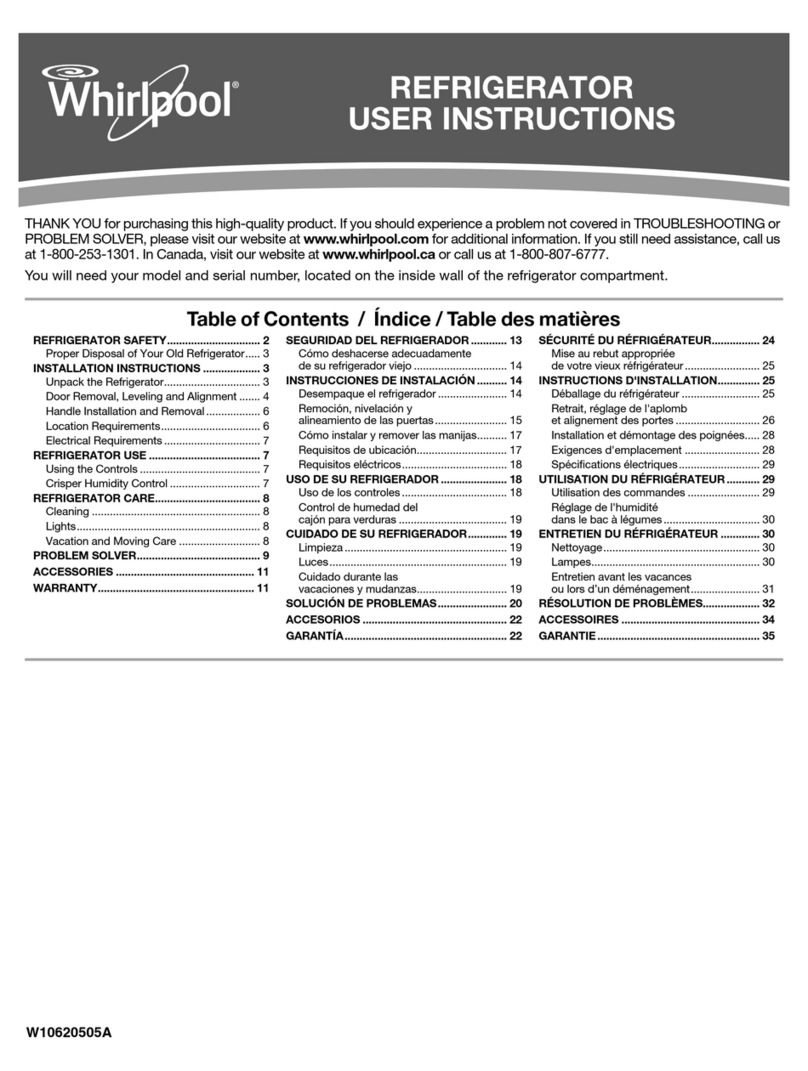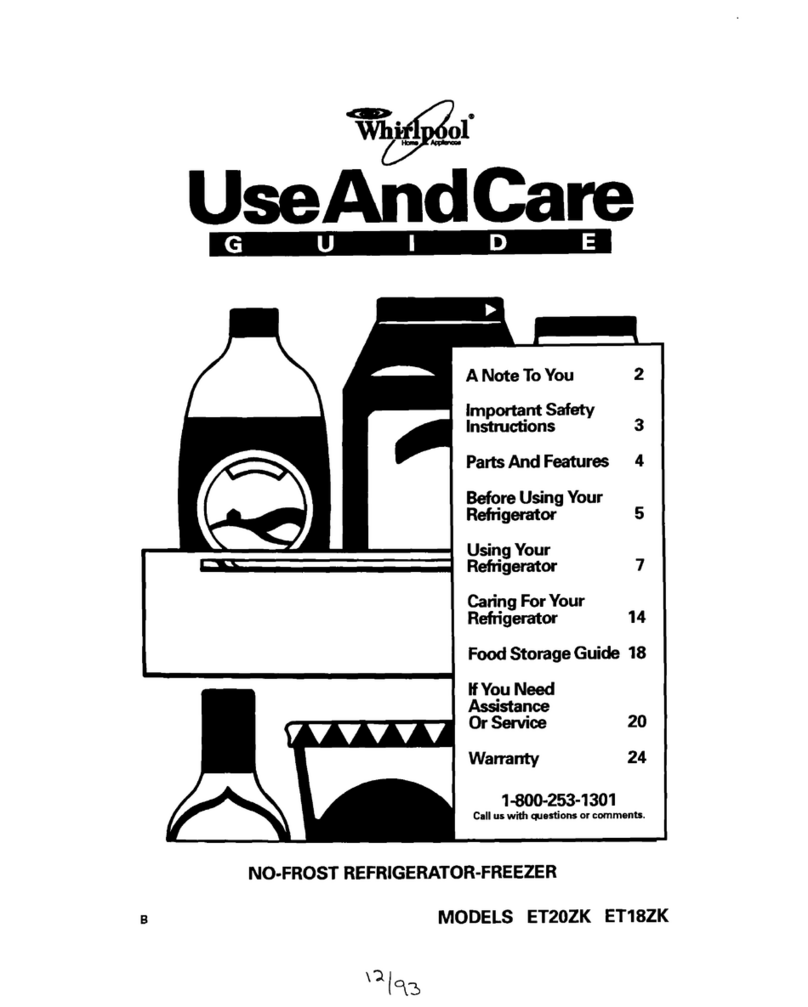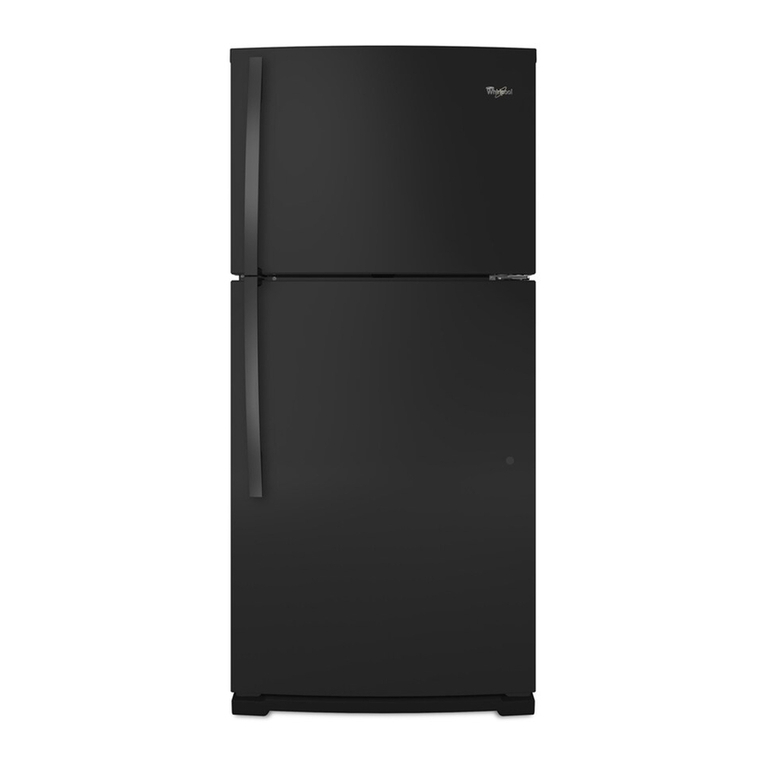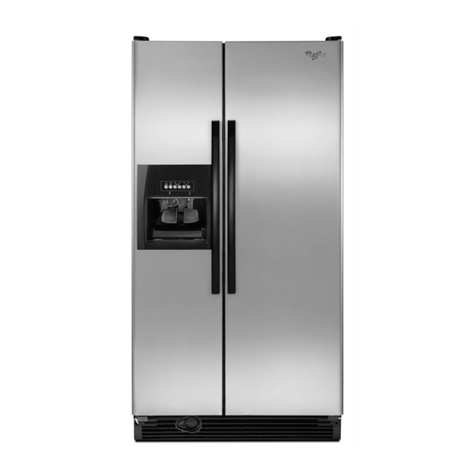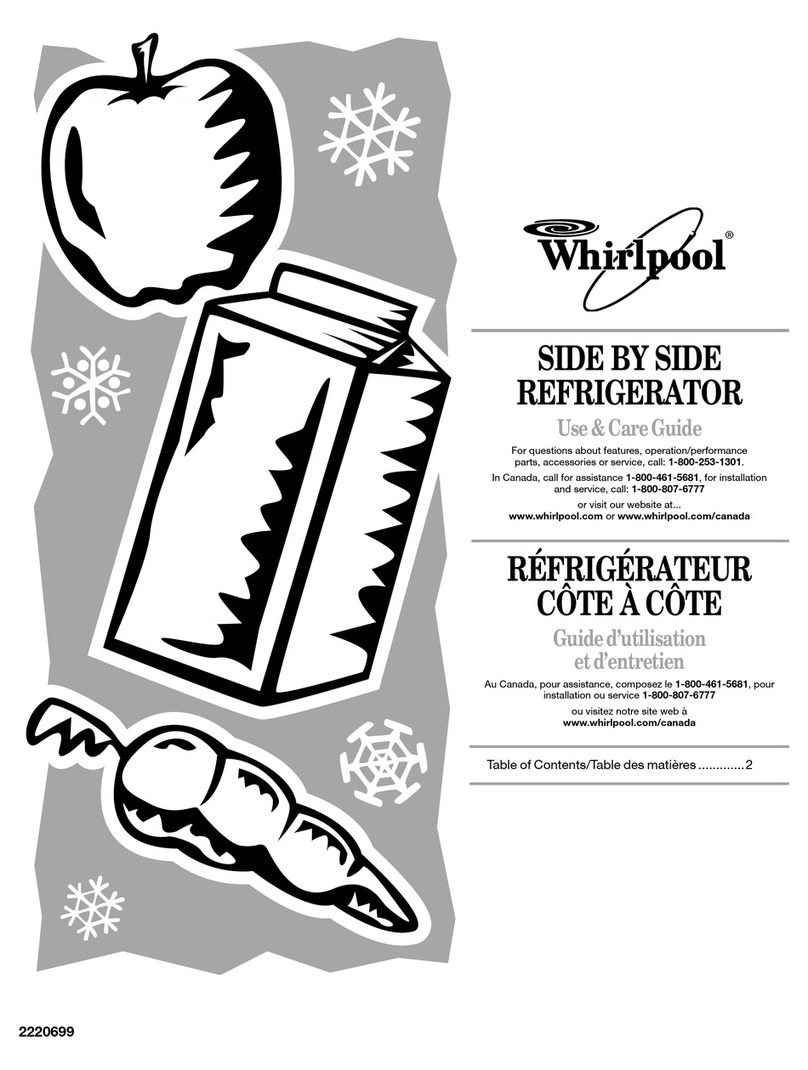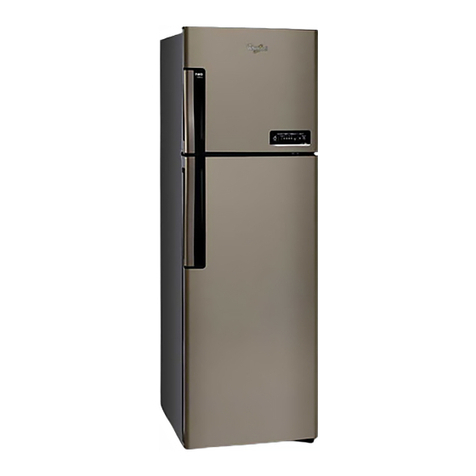Optional automatic ice maker
Food Storage Guide
If you have the automatic ice maker
accessory(Part No.ECKMF-90)or if you
plan to add it later, there are afew
things you will
want
to know:
Storing fresh food
Foodplaced in the refrigerator should be
wrapped or stored in air and moisture
proof material This prevents food odor
and taste transfer throughout the
refrigerator. For dated products, check
codedate to ensure freshness.
Connect the ice maker to the water
supply before turning it on.
The ON/OFFlever is a wire signal
fmn. Lower signal arm to make ice.
Raisesignal arm to turn off the ice
maker.
Freezermust be cold enough for the
ice maker to work. This may take
eight hours or more before the
correct temperature is reached
‘First” ice may be discolored or off-
flavored because ofnew plumbing
connections. Throw away Brst few
batches of ice.
Changeice cube size with the dial
or lever on the side of the ice maker.
Ice crescentsare normally attached
at the comer. They break apart
easily.
Normal
sounds include water
running when the ice maker is
working and the thud of ice asit
falls into the bin.
n
If ice is not being madefast enough
and more ice is needed, tom the
Refrigerator Control to a higher
number. Wait 24hours, and if this
doesnot increase the ice supply,
turn the Freezer Control to A
. Raisethe signal arm before you
remove the ice bin. When you
replace the bin, push it in all the
way. Then lower the arm to the ON
position.
. Cubesleft in the bin for long
periods of time may develop an off-
flavor, like stale water. Throw old
cubes away. Ice makerwill make
new ice. Cubesmay also become
smaller if stored for a long time.
8 Goodwater quality is important for
good ice quality. It is not recom-
mended that you connect the ice
maker to a softened water supply. If
a softened water supply cannot be
avoided, it is important to maintain
the water softener soit operates
properly. Water softener chemicals,
such assalt from amalfunctioning
softener, can damagethe ice maker
mold and lead to poor ice quality.
Wipe milk cartons. For best storage,
place milk on interior shelf.
Butter or margarine
Keepopened butter in covered dish or
butter compartment. When storing an
extra supply,
wrap in
freezer packaging
and freeze.
Cheese
Storein the original wrapping until you
are ready to use it. Once opened rewrap
tightly in plastic wrap or aluminum foil
Meat
Most meat can be stored in original
wrapping aslong asit is air and
moisture proof. Rewrap if necessary.See
the following chart for storage times.
Fresh and cured meat
storage chart*
TYPE APPROxlMATE
TIME (DAYS)
Chicken ....................... lto2
Ground beef ............... 1to2
Steaksand roasts....... 3 to 5
Cured meats............... 7 to10
Bacon.......................... 5to7
Cold cuts..................... 3to 5
Variety meats............. lto2
l
If meat is to be stored longer than the
times given, follow the directions for
freezing.
NOTE: Fresh fish and shellfish should be
used the sameday aspurchased.
Vegetables
For leafy vegetables: remove store
wrapping and trim or tear off bruised
and discolored areas.Wasbin cold water
and drain Placein plastic bag or plastic
container and store in crisper.
For vegetablea with skins: store in
crisper, plastic bags or plastic container.
Fruit
Wash,let dry and
store
in refrigerator in
plastic bags or crisper. Donot wash or
hull berries until they areready to use.
Sortand keep berries in their store
container in a crisper, or store in a
loosely closed paper bag on a
refrigerator shelf.
mgs
Storewithout washing in the original
carton on interior shelf.
Milk
LdtOV6Ul3
Cover leftovers with plastic wrap or
aluminum foil Plastic containers with
tight lids can also be used.
Storing frozen food
The freezer section is designed for
storage of commercially frozen food and
for freezing food at home. Forfurther
information about preparing food for
freezing or food storage times, conlxt
your local Cooperative Extension Service
or check a freezer guide or cookbook.
The secret of successful freezing is in
the packaging. The way you closeand
seai the package must not allow air or
moisture in or out. Packaging done in
any other way could causefood odor and
taste transfer throughout the refrigerator
and drying offrozen food
Rigid plastic containers with tight fitting
lids, straight-sided canning/freezing jars,
heavy-duty aluminum foil, plastic-coated
paper and nonpermeable plastic wraps
(madefrom a saran film) are recom-
mended. Follow packageor container
instructions for proper freezing methods.
Do
not
use: bread wrappers, non-rigid
plastic containers, containers without
tight-fitting lids, waxed paper, waz-
coated frwzer wrap or thin, semi-
permeable wrap. The use of these
wrappings could causefood odor and
taste transfer and drying of frozen food
Freezing
Donot expect your freezer to quick-
freeze any large quantity of food Put no
more unfrozen food into the freezer than
will freezewithin 24hours. (No more
than 2 to 3 pounds of food per cubic foot
of freezer space.)Leave enough space
for air to circulate around packages.Be
careful to leave enough room at the front
so the door can dose tightly. Storage
times will vfuy according to the quality
of the food, type of packaging or wrap
used (air and moisture proof), and
storage temperature which should be
0°F(-176°C).
Page6
